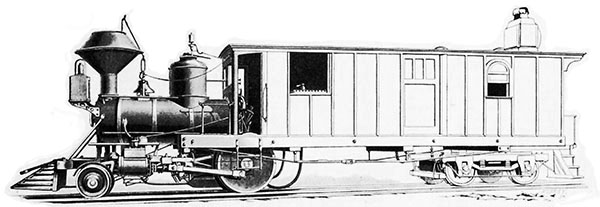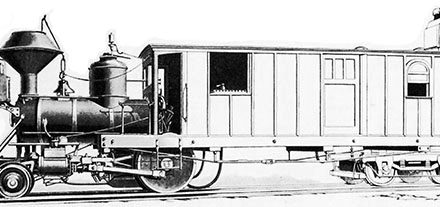Feb. 20, 1848
E. H. Harriman born in Hempstead, N.Y.
http://www.bookrags.com/E._H._Harriman
1867
Trans-Pacific trade was pioneered when the Pacific Mail Steamship Co. dispatched the 300-foot steamship Colorado from SF to Yokohama and Hong Kong. (SFEC, 11/22/98, p.B1)
http://timelines.ws/1867_1870.HTML
Apr 20, 1868
New York legislature gives full control of Erie (first Gould railroad) to Jay Gould and James Fisk; Commodore Vanderbilt defeated.
http://www.psta.com/articlerailroadtimeline.htm
Feb 1, 1869
New York Stock Exchange requires shares of all listed companies to be officially registered.
http://www.psta.com/articlerailroadtimeline.htm
May 10, 1869
Union Pacific and Central Pacific drive “Golden Spike” at Promontory, Utah, completing the transcontinental railroad.
http://www.psta.com/articlerailroadtimeline.htm
Sep 13, 1869
Jay Gould and James Fisk attempted to control the US gold market. (MC, 9/13/01)
http://timelines.ws/1867_1870.HTML
Sep 24, 1869
Jay Gould and James Fisk precipitate “Black Friday” gold market crash after driving gold to 162.
http://www.psta.com/articlerailroadtimeline.htm
1869
In response to Gould’s and Fisk’s market manipulations, the New York Stock Exchange outlaws “stock-watering” (issuing shares in secret.)
http://www.psta.com/articlerailroadtimeline.htm
Nov 8, 1869
The transcontinental railway arrived in Oakland, Ca. The Mariposa pulled 6 coaches into Oakland at 7th and Broadway. (SFEC, 3/8/98, p.W27)(SFC, 9/3/99, p.A4)(SFC, 5/3/02, p.A20)
http://timelines.ws/1867_1870.HTML
Nov 17, 1869
The Suez Canal was opened in Egypt, linking the Mediterranean and the Red seas. The 100 mile canal eliminated a 4000-mile trip around Africa. Empress Eugenie, the wife of Napoleon III, together with Ferdinand de Lesseps, chief architect of the canal, led the first file of ships from on board the French imperial yacht Aigle. It was financed by the Rothschild banking empire. In 2003 Zacharay Karabell authored “Parting the Desert: The Creation of the Suez Canal.” (I&WWI, p.1041)(SFC, 7/12/96, p.A11)(AP, 11/17/97)(MC, 11/17/01)(WSJ, 7/10/03, p.D8)
http://timelines.ws/1867_1870.HTML
1869
Wells Fargo allowed Leland Stanford, Charles Crocker, Henry Huntington and mark Hopkins (the Big Four) to gain controlling interest in exchange for the exclusive rights to carry express over the Transcontinental Railroad. (SFC, 6/9/98, p.A10)
http://timelines.ws/1867_1870.HTML
1870
E.H. Harriman (22) bought a seat on the New York Stock Exchange. (WSJ, 3/21/00, p.A24)
http://timelines.ws/1867_1870.HTML
Jan 6, 1872
Edward Stokes murders James Fisk in Grand Central Hotel, New York.
http://www.psta.com/articlerailroadtimeline.htm
Mar 15, 1872
Jay Gould resigns from board of Erie.
http://www.psta.com/articlerailroadtimeline.htm
Sep 4, 1872
New York Sun begins exposing Credit Mobilier financing which culminates in huge railroad financing scandal.
http://www.psta.com/articlerailroadtimeline.htm
1872
Vanderbilt interests acquire sufficient Union Pacific stock to install Horace Clark as president.
http://www.psta.com/articlerailroadtimeline.htm
June 1873
Jay Gould acquires first Union Pacific shares upon death of Horace Clark.
http://www.psta.com/articlerailroadtimeline.htm
Sep 18, 1873
Jay Cooke & Co brokerage fails because of problems financing the Northern Pacific. Failure of Cooke and 37 additional brokerages and banks precipitates the Panic of 1873. New York Stock Exchange closed for 10 days. Five-year depression follows.
http://www.psta.com/articlerailroadtimeline.htm
Mar, 1874
Jay Gould elected to Union Pacific board of directors.
http://www.psta.com/articlerailroadtimeline.htm
Jan, 1880
Jay Gould acquires Missouri Kansas & Texas stock and becomes president.
http://www.psta.com/articlerailroadtimeline.htm
Jan 1882
C.P. Huntington and Jay Gould together purchased a half interest in the St Louis & San Francisco (Frisco), which itself owned a half interest in the Atlantic & Pacific. Huntington envisioned a true transcontinental line connecting his Chesapeake & Ohio system with the Central and Southern Pacific system via the Frisco and the Atlantic & Pacific. In 1884 Huntington sold his interest in the Atlantic & Pacific to the Santa Fe as part of a larger settlement, and turned his attention to extending his Chesapeake & Ohio system to a Southern Pacific connection at New Orleans. (Wyatt notes).
1883
Harriman joined the Illinois Central’s board of directors when Stuyvesant Fish became Vice President.
http://icrrhistorical.org/edward.harriman.html, http://www.1911encyclopedia.org/Edward_Henry_Harriman
1887
Harriman became Vice-President of the Illinois Central when Stuyvesant Fish became President.
http://www.scripophily.net/orandtrancom1.html, http://www.1911encyclopedia.org/Edward_Henry_Harriman
1890
CP Huntington replaces Leland Stanford as President of Southern Pacific Company. Stanford becomes chairman of the Executive Committee.
http://www.answers.com/topic/southern-pacific-railroad
Dec 2, 1892
Jay Gould died, leaving George Gould as head of the family and the Union Pacific effectively without leadership. Sidney Dillon had died in June and Bishop John Sharp (very much a part of the Union Pacific leadership and representative of the interests of Brigham Young and the Mormon Church) had died the previous December. S. H. H. Clark had taken over as president when Dillon died, but Clark was a Gould man and when Gould died, Clark lost his influence against the bankers and the government in the fight over repaying the floating debt and the government bonds. (Klein, pp. 645-652)
http://utahrails.net/up/up-in-ut-1.php
June 21, 1893
Leland Stanford of the Central Pacific and Southern Pacific dies.
http://www.answers.com/topic/leland-stanford
June 27, 1893
New York stock market collapses, resulting in 4-year depression.
http://www.psta.com/articlerailroadtimeline.htm
Oct 13, 1893
The bondholders and the federal government forced Union Pacific into receivership. The government construction bonds issued between 1865 and 1869 were due and the railroad still owed $11.8 million of the original $18.8 million. Fred Ames died on September 12. He was the last of the directors that had been fighting receivership. (Klein, pp. 657, 658) The receivership also included the Echo & Park City Railway, which Union Pacific had controlled since July 1, 1881. (44 Val Rep 193)
http://utahrails.net/up/up-in-ut-1.php
spring 1895
A separate receiver is named for the OSL&UN. (Trottman p. 261)
http://utahrails.net/up/up-in-ut-1.php
Feb 23, 1897
The property of old Oregon Short Line & Utah Northern Railway was sold to the new Oregon Short Line Railroad, incorporated for the purpose in Utah on February 1, 1897. On January 9, the receivers had sold the property to the reorganization committee, who then sold it to the OSL. (OSL corporate history)
http://utahrails.net/up/up-in-ut-1.php
March 5, 1897
The new OSL took possession of the OSL&UN on March 5, 1897. (OSL corporate history)
(Trottman, p. 261, gives date as “early 1897”.)
(The Salt Lake Daily Tribune of March 16, 1897 says that the transfer took place “last night, at midnight”, March 15, 1897.)
http://utahrails.net/up/up-in-ut-1.php
Nov 1, 1897
The property of the Union Pacific Railway was sold at foreclosure to a new corporation, incorporated in Utah, called the Union Pacific Railroad, incorporated for the purpose on July 1, 1897. (Utah corporation number 2083) The organization of the new Union Pacific had been approved by an act of the Utah Legislature on January 22, 1897. (Poor’s, 1929, p. 1051) The new Union Pacific took possession of the old Union Pacific on January 31, 1898. (Trottman, p. 269)
http://utahrails.net/up/up-in-ut-1.php
1897
Union Pacific is sold to a group of investors for $110 million. Their number includes E.H. Harriman, then-president of the Illinois Central.
http://www.uprr.com/aboutup/history/uprr-chr.shtml
1898
E.H. Harriman took over the Union Pacific Railroad. He invested heavily into the company and raised the stock price from $16 to $219 in 1907. (WSJ, 3/21/00, p.A24)
http://timelines.ws/1898_1899.HTML
May 1898
By this date Harriman is chairman of the executive committee, and from that time until his death his word was law on the Union Pacific system.
http://www.bookrags.com/E._H._Harriman
1898
Sunset Magazine began as a publication by the Southern Pacific Co. to promote rail travel and to sell real estate. (SFEC, 4/5/98, Z1 p.1)
Sunset Magazine was founded by the Southern Pacific Railroad to lure travelers west. It was sold to a private publisher in 1914. (SFC, 7/8/96, p.D1)
http://timelines.ws/1898_1899.HTML
Aug 13, 1900
Collis P. Huntington died at his camp, Pine Knot, in the Adirondacks.
http://www.huntington.tierranet.com/bios/collis.htm
Oct 1900
Charles Hayes elected President of Southern Pacific. Henry Huntington had expected to succeed his uncle.
http://72.14.253.104/search?q=cache:Ngh0yMz0T8EJ:www.ohiostatepress.org/Books/Complete%2520PDFs/Friedricks%2520Henry/04.pdf+Southern+Pacific+president+Charles+Hayes+1900&hl=en&gl=us&ct=clnk&cd=6
1900
By 1900 E. H. Harriman had “absolute control” of Union Pacific. He had been involved in the reorganization, was a director of the new corporation and had gradually increased his holdings until he took control. (Trottman p. 274)
http://utahrails.net/up/up-in-ut-2.php#up-after-1900
Feb 1901
Arabella and Henry Huntington sell their interests in Southern Pacific, inherited from CP Huntington, to EH Harriman.
http://72.14.253.104/search?q=cache:Ngh0yMz0T8EJ:www.ohiostatepress.org/Books/Complete%2520PDFs/Friedricks%2520Henry/04.pdf+Southern+Pacific+president+Charles+Hayes+1900&hl=en&gl=us&ct=clnk&cd=6
Harriman also acquired interests from Stanfords, Crockers, and Hopkins/Searles (dates? cites?)
1901
Union Pacific purchases 38% of Southern Pacific stock and assumes control of the railroad.
http://www.uprr.com/aboutup/history/uprr-chr.shtml
1901
Union Pacific purchased the holdings of the Huntington estate in the Southern Pacific Company.
http://cprr.org/Museum/Railroad_Builders/Railroad_Builders_11.html
April 3, 1901
By this SP Board meeting Harriman has replaced Henry Huntington on the Board.
(Lynn Farrar)
1901 to 1909
Harriman was the President of the Southern Pacific railroad.
http://www.bookrags.com/E._H._Harriman
May 9, 1901
James Hill and J.P. Morgan fight with Edward Harriman and Kuhn Loeb over control of Great Northern and Northern Pacific. Stock hits $1000/share, causing panic and collapse in other stocks.
http://www.coxrail.com/database/timeline.asp
Nov 13, 1901
Northern Securities Co formed to control Great Northern and Northern Pacific. Near-monopoly in northern shipping follows, eventually resulting in major trust company.
http://www.coxrail.com/database/timeline.asp
End 1901
By the end of 1901 Union Pacific had purchased 45 percent of Southern Pacific stock, giving it control of the SP. (Trottman p. 281)
http://utahrails.net/up/up-in-ut-2.php#up-after-1900
Mar 10, 1902
Attorney General begins prosecution against Northern Securities Company for violating the Sherman Anti-Trust law.
http://www.coxrail.com/database/timeline.asp
July 9, 1902
Harriman and Clark reach agreement that ends the rivalry for the route between Nevada and Caliente and south through Meadow Valley Wash in Nevada. (SP,LA&SL corporate history)
http://utahrails.net/up/up-in-ut-2.php#up-after-1900
1903
Harriman assumed the office of president of the Union Pacific.
http://www.bookrags.com/E._H._Harriman
July 7, 1903
SP,LA&SL purchased all OSL lines south and west of Salt Lake City. (Poor’s, 1929, p. 1066)
http://utahrails.net/up/up-in-ut-2.php#up-after-1900
Mar 14, 1904
Supreme Court rules against Northern Securities Co. for violating the Sherman Anti-Trust law.
http://www.coxrail.com/database/timeline.asp
May 26, 1905
SP,LA&SL formally completed the route between Salt Lake City and Los Angeles and began regular operations. (SP,LA&SL corporate history) (COMMENT: Poor’s 1929 manual, p. 1066, gives the date as May 1, 1905.) On January 30, 1905 the railroad had completed a temporary connection in the line of new construction between Nevada and Daggett, California, which formed a complete rail line between Salt Lake City and Los Angeles. The connection was actually a temporary one, around several cuts that had not been completed. (SP,LA&SL corporate history)
http://utahrails.net/up/up-in-ut-2.php#up-after-1900
Feb 18, 1908
Federal government sued Union Pacific to break up the “combination” with Southern Pacific, because it was in restraint of competitive trade and commerce. (Trottman, p. 358)
http://utahrails.net/up/up-in-ut-2.php#up-after-1900
Sept 1909
E. H. Harriman died. (Trottman, p. 362)
http://utahrails.net/up/up-in-ut-2.php#up-after-1900
Sept 9, 1909
Harriman died.
http://www.bookrags.com/E._H._Harriman
April 1910
Hearings for the break-up of Union Pacific and SP ended. (Trottman, p. 362)
http://utahrails.net/up/up-in-ut-2.php#up-after-1900
Feb 24, 1911
U.S. Circuit Court dismisses bill to force segregation of Southern Pacific Company and Union Pacific Railroad.
http://www.prrths.com/Hagley/PRR1911%20Mar%2005.pdf#search=%22PRR%20Chronology%201911%20Union%20Pacific%22
1911
In 1911 the Circuit Court decided in favor of UP/SP, the government appealed the case to the U. S. Supreme Court, which found in favor of the government on December 2, 1912. The Supreme Court agreed to have Union Pacific submit a plan of dissolution to the Circuit Court, by July 1, 1913, that the railroad would dissolve its interest in SP within twenty days of that date. (Trottman, pp. 368, 369)
http://utahrails.net/up/up-in-ut-2.php
Mar 14, 1912
Department of Justice sues to end Union Pacific’s control of Southern Pacific and dismember the Harriman system of railroads under the antitrust laws.
http://www.prrths.com/Hagley/PRR1912%20Mar%2005.pdf#search=%22PRR%20Chronology%201912%22
Dec 2, 1912
U.S. Supreme Court overturns lower court ruling and orders segregation of Southern Pacific from Union Pacific, dismembering Harriman system of railroads. (RyAgeGaz)
http://www.prrths.com/Hagley/PRR1912%20Mar%2005.pdf#search=%22PRR%20Chronology%201912%22
1913
UP is ordered by the U.S. Supreme Court to sell its 46% share of SP stock and relinquish control.
http://www.uprr.com/aboutup/history/uprr-chr.shtml
Jan 6, 1913
US Supreme court refuses to consider segregation by simple distribution of Southern Pacific shares to Union Pacific stockholders.
http://www.prrths.com/Hagley/PRR1913%20Feb%2005.pdf#search=%22UP%20SP%201913%20divestiture%22
Feb 1, 1913
Union Pacific control of Southern Pacific ended.
(from “E. H. Harriman’s Dream” by Don Hofsommer, in The Streamliner, Volume 10, Number 2, pages 27-31)
Mar 1, 1913
Federal Valuation Act authorizes the ICC to conduct a valuation of all US railroad property; replacement value to serve as the basis for yielding a “fair rate of return” on costs. (EAH)
http://www.prrths.com/Hagley/PRR1913%20Feb%2005.pdf#search=%22UP%20SP%201913%20divestiture%22
June 7, 1913
President Rea (of Pennsylvania RR) agrees to swap PRR’s holdings of B&O for Union Pacific’s holdings of Southern Pacific. (Wheeler)
http://www.prrths.com/Hagley/PRR1913%20Feb%2005.pdf#search=%22UP%20SP%201913%20divestiture%22
June 25, 1913
Union Pacific Chairman Robert S. Lovett and Attorney General McReynolds meet at law offices of Paul D. Cravath in New York; UP proposes to effect court ordered divorce from Southern Pacific by swapping its SP shares for the B&O shares held by PRR. (NYT)
http://www.prrths.com/Hagley/PRR1913%20Feb%2005.pdf#search=%22UP%20SP%201913%20divestiture%22
July 12, 1913
Pres. Rea advises Southern Pacific Pres. Julius Kruttschnitt that PRR will not seek representation on SP Board. (Wheeler)
http://www.prrths.com/Hagley/PRR1913%20Feb%2005.pdf#search=%22UP%20SP%201913%20divestiture%22
July 16, 1913
Following divestiture order of U.S. Supreme Court, Union Pacific trades 382,924 shares [46%] of Southern Pacific Company stock valued at $38.3 million to PRR for its remaining interest in B&O, 212,736 shares common and 212,736 preferred; deal is brokered by Paul Warburg of Kuhn. Loeb & Co, bankers to both PRR and UP, who receive 3/4% of par value as commission; Samuel Rea and John P. Green, last PRR directors, resign from B&O board; deal is very profitable to PRR and keeps control of SP in friendly hands. (Wheeler)
http://www.prrths.com/Hagley/PRR1913%20Feb%2005.pdf#search=%22UP%20SP%201913%20divestiture%22
Feb 11, 1914
U. S. government brought suit under Sherman Antitrust Act to separate Central Pacific from Southern Pacific.
(from “E. H. Harriman’s Dream” by Don Hofsommer, in The Streamliner, Volume 10, Number 2, pages 27-31)
March 1915
SP/CP antitrust suit trial held in San Francisco.
(from “E. H. Harriman’s Dream” by Don Hofsommer, in The Streamliner, Volume 10, Number 2, pages 27-31)
Aug 25, 1916
San Pedro, Los Angeles & Salt Lake Railroad name changed to Los Angeles & Salt Lake Railroad. Name changed approved by stock holders on August 16, 1916. (Signor, LA&SL, p.86)
http://utahrails.net/up/up-in-ut-2.php#up-after-1900
Mar 10, 1917
District court in San Francisco denied government’s antitrust suit; government appealed district court decision to U. S. Supreme Court.
(from “E. H. Harriman’s Dream” by Don Hofsommer, in The Streamliner, Volume 10, Number 2, pages 27-31)
Jan 1, 1918
USRA assumed control of the railroads. (source not recorded)
http://utahrails.net/up/up-in-ut-2.php#up-after-1900
Jan 1, 1918 to March 1, 1920
USRA control of SP.
(from “E. H. Harriman’s Dream” by Don Hofsommer, in The Streamliner, Volume 10, Number 2, pages 27-31)
Feb 29, 1920
USRA ended government control of the railroads. (source not recorded)
http://utahrails.net/up/up-in-ut-2.php#up-after-1900
Early 1921
Government case taken by Supreme Court after being deferred due to USRA control of SP.
(from “E. H. Harriman’s Dream” by Don Hofsommer, in The Streamliner, Volume 10, Number 2, pages 27-31)
April 27, 1921
Union Pacific agreed to acquire the Clark half interest in LA&SL; the purchase was mostly completed by the end of the year. On January 1, 1922 Union Pacific began including the business of the LA&SL in its System statements and reports. (Poor’s, 1929, p. 1066)
(The other half interest in LA&SL was owned by OSL, which itself is owned by Union Pacific.)
http://utahrails.net/up/up-in-ut-2.php#up-after-1900
May 29, 1922
Supreme Court found in favor of government.
(from “E. H. Harriman’s Dream” by Don Hofsommer, in The Streamliner, Volume 10, Number 2, pages 27-31)
Oct 9, 1922
Supreme Court refused SP’s petition for rehearing.
(from “E. H. Harriman’s Dream” by Don Hofsommer, in The Streamliner, Volume 10, Number 2, pages 27-31)
Oct 17, 1922
SP applied to control CP by stock ownership and lease agreement, under authority of Transportation Act of 1920. Union Pacific filed an opposing petition.
(from “E. H. Harriman’s Dream” by Don Hofsommer, in The Streamliner, Volume 10, Number 2, pages 27-31)
Nov 21, 1922
Hearings held at Washington D.C.
(from “E. H. Harriman’s Dream” by Don Hofsommer, in The Streamliner, Volume 10, Number 2, pages 27-31)
Feb 6, 1923
ICC authorized SP control of CP, including provisions of previous agreement for preferential treatment with UP through Ogden. This was the start of the Ogden gateway case because it allowed (forced) SP to solicit traffic for interchange with UP at Ogden that originated on SP north of Santa Margarita and Caliente, California, and south of Kirk, Oregon. This was essentially the same lines of separation line as an earlier internal agreement between UP and SP under Harriman control that decided which gateway would be used, Ogden for UP traffic or El Paso for SP traffic.
(from “E. H. Harriman’s Dream” by Don Hofsommer, in The Streamliner, Volume 10, Number 2, pages 27-31)



